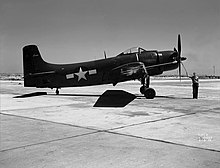This ZM kit pretty much has a complete interior, including some frame work. The problem is one only sees about 5% of it. It's nice to know it's there if one wanted to do a section model.
Zoukei-Mura make a beautiful kit though they also come with a hefty price tag to match.
From Wikipedia"
The Douglas A-1 Skyraider (formerly AD) was an American single-seat attack aircraft that saw service between the late 1940s and early 1980s. It became a piston-powered, propeller-driven anachronism in the jet age, and was nicknamed "Spad, after the French World War I fighter. The Skyraider had a remarkably long and successful career, even inspiring its straight-winged, slow-flying, jet-powered successor, the A-10 Thunderbolt II.
It was operated by the United States Navy (USN), the U.S. Marine Corps (USMC) and the United States Air Force (USAF), and also saw service with the British Royal Navy, the French Air Force, the Air Force of the Republic of Vietnam (VNAF), and others.
The piston-engined Skyraider was designed during World War II to meet U.S. Naval requirements for a carrier-based, single-seat, long-range, high performance dive/torpedo bomber, to follow-on from earlier types such as the Helldiver and Avenger. Designed by Ed Heinemann of the Douglas Aircraft Company, prototypes were ordered on 6 July 1944 as the XBT2D-1. The XBT2D-1 made its first flight on 18 March 1945 and in April 1945, the USN began evaluation of the aircraft at the Naval Air Test Center (NATC). In December 1946, after a designation change to AD-1, delivery of the first production aircraft to a fleet squadron was made to VA-19A.
The AD-1 was built at Douglas' El Segundo plant in Southern California. In his memoir The Lonely Sky, test pilot Bill Bridgeman quotes a production rate of two aircraft per day, describing the routine yet sometimes hazardous work of certifying AD-1s fresh off the assembly line for delivery to the U.S. Navy in 1949 and 1950.
The low-wing monoplane design started with a Wright R-3350 radial engine, later upgraded several times. Its distinctive feature was large straight wings with seven hard points apiece. These gave the aircraft excellent low-speed maneuverability, and enabled it to carry a large amount of ordnance (more than its own weight in weapons) over a considerable combat radius and loiter time for its size, comparable to much heavier subsonic or supersonic jets. The aircraft was optimized for the ground-attack mission and was armored against ground fire in key locations unlike faster fighters adapted to carry bombs, such as the Vought F4U Corsair or North American P-51 Mustang, which would be retired by U.S. forces before the 1960s.
Shortly after Heinmann began design of the XBT2D-1 a study was issued that showed for every 100 lbs of weight reduction the take-off run was decreased by 8 feet, the combat radius increased by 22 miles and the rate of climb increased by 18 feet. Heinmann immediately had his design engineers begin a program of finding weight saving on the XBT2D-1 design no matter how small. 270 lbs was found by simplifying the fuel system; 200 lbs by eliminating an internal bomb bay and hanging the bombs, drop tanks and rockets from the wings or fuselage; 70 lbs by using a fuselage dive brake; and 100 lbs by using an older tail wheel design. In the end Heinmann and his design engineers found over 1800 lbs of weight savings on the original XBT2D-1 design.
Navy AD series were initially painted in ANA 623 Glossy Sea Blue, but during the 1950s following the Korean War, the color scheme was changed to light gull grey (FS26440) and white (FS27875). Initially using the gray and white Navy pattern, by 1967 the USAF began to paint its Skyraiders in a camouflaged pattern using two shades of green, and one of tan.
Used by the USN over Korea and Vietnam, the A-1 was a primary close air support aircraft for the USAF and VNAF during the Vietnam War. The A-1 was famous for being able to take hits and keep flying. There was added armor plating around the cockpit area for added pilot protection. It was replaced beginning in the mid-1960s by the Grumman A-6 Intruder as the Navy's primary medium attack plane in supercarrier-based air wings; however Skyraiders continued to operate from the smaller Essex class carriers.
The Skyraider went through seven versions, starting with the AD-1, then AD-2 and AD-3 with various minor improvements, then the AD-4 with a more powerful R-3350-26WA engine. The AD-5 was significantly widened, allowing two crew to sit side-by-side (this was not the first multiple-crew variant, the AD-1Q being a two-seater and the AD-3N a three-seater); it also came in a four-seat night-attack version, the AD-5N. The AD-6 was an improved AD-4B with improved low-level bombing equipment, and the final production version AD-7 was upgraded to a R-3350-26WB engine.
In addition to serving during Korea and Vietnam as an attack aircraft, the Skyraider was modified into a carrier-based airborne early warning aircraft, replacing the Grumman TBM-3W Avenger. It served in this function in the USN and Royal Navy, being replaced by the Grumman E-1 Tracer and Fairey Gannet respectively in those services.
Skyraider production ended in 1957 with a total of 3,180 built. In 1962, the existing Skyraiders were redesignated A-1D through A-1J and later used by both the USAF and the Navy in the Vietnam War.







6 comments:
As usually a gigant scale plane. Very nice scheme and good work. Really amazing decals. I love this plane specially in the navy scheme.
Thanks Pablo - I've always loved the Skyraider. I'm glad there is one available in 1/32.
Beautiful and spectacular, and I like the photos. Highlight more right?
Gracias Diego - Si te fijas bien todavía se puede ver el linóleo por debajo. LOL!!
VERY NICE job!
This is my favorite piston engined plane, specially camo version used in Vietnam. And the sound of Wright engine...Wow!!
Indeed, the Skyraider is a real brute.
Post a Comment